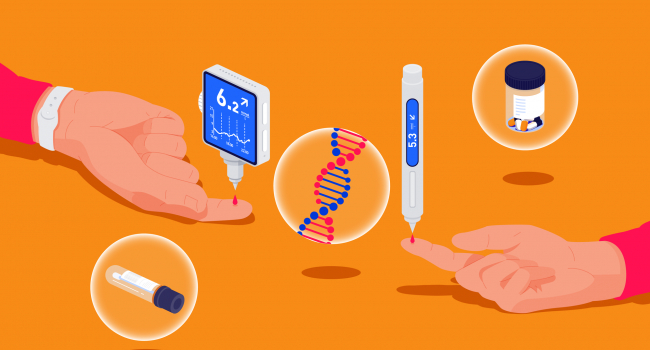- Latest news▼
-
15:11, April 24 Zombie deer disease possibly linked to hunters’ deaths

-
12:27, April 23 Appetite: Scientists found out the secret to the appeal of large portions of fast food

-
10:33, April 23 Scientists test new approach to fighting viruses

-
08:38, April 23 Ketamine may help with postpartum depression

-
22:12, April 22 Unhealthy amount of sugar found in baby food products of a well-known brand

-
19:41, April 22 Air pollution puts health of more than 1.6 billion workers globally at risk

-
17:25, April 22 Scientists found baked goods and lack of sleep to be more dangerous than alcohol

-
16:02, April 22 342 cases of measles recorded in Armenia so far in 2024

-
15:29, April 22 BrainStimulation: electrical brain stimulation alleviates anxiety and depression in the elderly

-
08:27, April 22 Cognitively stimulating jobs in midlife could lower dementia risk in old age, study finds

-
20:37, April 21 Environmental Health Perspectives: Microplastics ingested with food and water can spread from the gut to the brain

-
22:41, April 20 Scientists develop new method to safely stimulate immune cells to fight cancer

-
20:46, April 20 Blood test can determine who is at risk of developing multiple sclerosis - scientists

-
18:36, April 20 Next pandemic likely to be triggered by flu - scientists

-
12:16, April 19 Scientists grow human mini-lungs in lab

All materials
Researchers find new way to treat diabetes

Researchers in Russia and the United States have discovered the structure of the BLT1 leukotriene receptor, which is involved in inflammatory processes and plays a role in the development of infectious, allergic, and oncological diseases. A respective study published in the journal Nature Communications paves the way for new treatments for type 2 diabetes.
Researchers have found out that BLT1 is linked to a number of diseases, including asthma, influenza, arthritis, atherosclerosis, diabetes, and even cancer.
They have tried many times to use the receptor as a target for drugs, but the potential drugs had a number of undesirable side effects, their effectiveness was very low, and it took a long time to get them out of the body.
The authors of the aforesaid study have introduced the crystal structure of human BLT1 (hBLT1) together with the selective antagonist MK-D-046, which was developed for the treatment of type 2 diabetes and other inflammatory conditions.
By studying the relationship between the structure and activity of the receptor through deliberate mutations in key parts of the molecule, researchers have determined the mechanism by which different subtypes attach to ligands (small molecules that form complex complexes with BLT1).
According to the researchers, knowing the structure helps to identify the pathway of ligand access to the receptor hidden in the cell membrane, as well as to determine the possible means of joining the receptor. This helps to understand how the ligands recognize the BLT1, and opens up new possibilities for drug development.
Follow NEWS.am Medicine on Facebook and Twitter
- Video
- Event calendar
- Archive
- Most read
month
week
day
- JAMA Oncology: Urine test can help rule out high-grade prostate cancer with almost 100% accuracy, study shows 1212
- Daily Mail: Elderly woman in China gets infected with brain-eating amoeba 1167
- The Conversation: childhood trauma can cause pathological hoarding 1150
- Obesity: exercising before breakfast helps you lose weight faster 1150
- Daily Mail: Satiating food reduces cravings for sweets, nutritionist says 1124
- Scientists grow human mini-lungs in lab 1115
- First Armenian-German Conference entitled “Heart Failure Spring School” 1063
- Next pandemic likely to be triggered by flu - scientists 706
- Scientists found baked goods and lack of sleep to be more dangerous than alcohol 634
- 342 cases of measles recorded in Armenia so far in 2024 595
- Blood test can determine who is at risk of developing multiple sclerosis - scientists 586
- Scientists develop new method to safely stimulate immune cells to fight cancer 579
- Cognitively stimulating jobs in midlife could lower dementia risk in old age, study finds 563
- BrainStimulation: electrical brain stimulation alleviates anxiety and depression in the elderly 519
- Air pollution puts health of more than 1.6 billion workers globally at risk 354
- Find us on Facebook
- Poll





